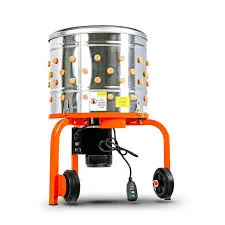The Welfare and Efficiency of Layer Hen Battery Cages in Poultry Farming
Nov . 25, 2024 06:05 Back to list
The Welfare and Efficiency of Layer Hen Battery Cages in Poultry Farming
The Layer Chicken Battery Cage An Overview of Its Impact on Poultry Farming
The layer chicken battery cage system has been a cornerstone of modern poultry farming for decades. Predominantly employed in the commercial production of eggs, this method has garnered significant attention and debate concerning animal welfare, environmental implications, and productivity. Understanding its mechanics and consequences is crucial for anyone interested in the poultry industry or animal rights advocacy.
At its core, the battery cage system is designed to maximize efficiency in egg production. Typically, these cages house 3 to 10 hens per unit, in tightly confined spaces, often reducing living space to an area smaller than a sheet of paper per bird. This high-density setup allows farms to produce large quantities of eggs while minimizing labor and feed costs. Proponents argue that these cages lead to increased productivity, improved biosecurity, and a more streamlined process for monitoring the health of the flock.
However, the benefits of battery cages must be weighed against significant ethical concerns. Critics argue that confining hens in such restrictive spaces leads to a myriad of welfare issues. Birds are social animals, and in a battery cage, they are deprived of the ability to exhibit natural behaviors such as nesting, perching, and foraging. This confinement often leads to physical problems, such as osteoporosis and broken bones, as well as psychological distress manifesting in aggressive behaviors or feather pecking. Animal welfare organizations have raised alarms about the severe impact of this system on the birds, advocating for alternatives that provide more space and freedom.
layer chicken battery cage

In response to these concerns, many countries and regions have implemented regulations aimed at improving the welfare of layer hens. For instance, the European Union has banned traditional battery cages since 2012, requiring producers to transition to enriched cages that offer more space and some necessary amenities. Similar movements are gaining momentum in other parts of the world, including parts of the United States and Canada, where consumers are increasingly asking for ethically-produced eggs.
The environmental considerations tied to the battery cage system are also worth examining. While these systems can optimize production efficiency, they often lead to larger-scale farming operations that contribute to significant waste management challenges. Concentrated animal feeding operations (CAFOs) can produce considerable amounts of manure, which, if not managed properly, can pollute local waterways and harm ecosystems. Moreover, the overuse of antibiotics in such dense living conditions raises concerns about antibiotic resistance, further complicating public health issues.
On the economic front, the battery cage system has allowed many farms to operate competitively, particularly in regions with lower production costs. However, as consumer demand shifts toward ethically sourced products, the industry may see significant changes in how it operates. Cage-free and free-range systems, while initially more expensive and less productive, are gaining market traction as consumers become more aware of animal welfare issues. Many grocery chains and food suppliers are pledging to phase out battery cage eggs, reflecting a broader trend toward sustainability and ethical farming practices.
In conclusion, the layer chicken battery cage system represents a complex intersection of efficiency, ethics, and environmental responsibility. While it provides a practical solution for mass egg production, the associated animal welfare concerns and environmental impacts cannot be overlooked. As society progresses toward more humane and sustainable farming practices, it remains essential for stakeholders across all sectors—producers, consumers, and policymakers—to engage in a dialogue that promotes both productivity and respect for animal welfare. The future of poultry farming may very well depend on our collective choices today, as we navigate the challenges of feeding a growing population while preserving the ethical standards that align with our values.
-
Automatic Feeding Line System-Pan Feeder Nipple Drinker|Anping County Yize Metal Products Co., Ltd.
NewsJul.29,2025
-
Hot Sale 24 & 18 Door Rabbit Cages - Premium Breeding Solutions
NewsJul.25,2025
-
Automatic Feeding Line System Pan Feeder Nipple Drinker - Anping County Yize Metal Products Co., Ltd.
NewsJul.21,2025
-
Automatic Feeding Line System Pan Feeder Nipple Drinker - Anping County Yize Metal Products Co., Ltd.
NewsJul.21,2025
-
Automatic Feeding Line System - Anping Yize | Precision & Nipple
NewsJul.21,2025
-
Automatic Feeding Line System - Anping Yize | Precision & Nipple
NewsJul.21,2025






